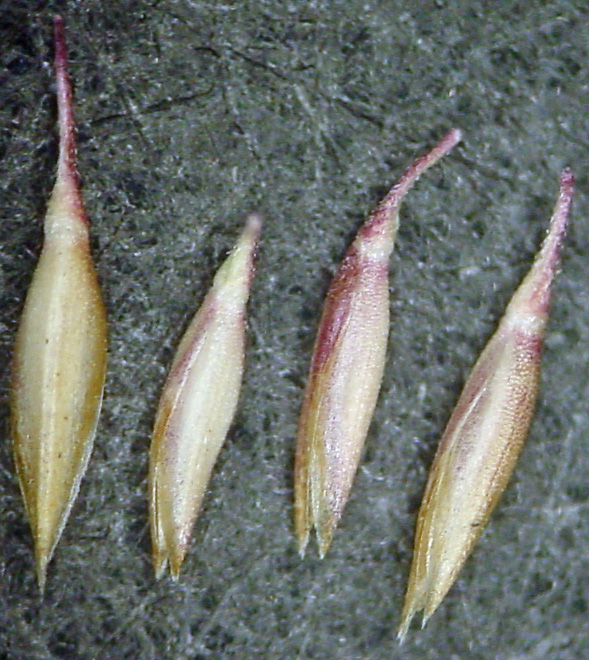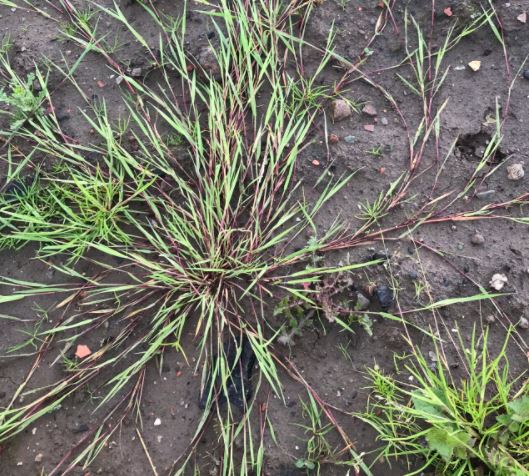
Key to the common species of Agrostis. You should collect underground parts and dissect a spikelet before beginning the key to determine whether the palea is large or small (more or less than 2/5 of lemma length). We shall start with the species with larger paleas. 



Select a spikelet from the very top of the inflorescence. If the back of the lemma is hairy (left) and there is a sticking-out awn, you have Agrostis castellana (much planted in commercial grass seed). Hairless (right) is something else. 



Look at the ligule on the upper-most culm leaf. If it is small (0.5-1.5mm) you have the widespread and abundant Agrostis capillaris. Larger ligules (2-6mm) are something else. 



Of the big ligule species, Agrostis gigantea (left) has rhizomes and A. stolonifera (right) has stolons. When mature, the inflorescence of A. stolonifera becomes narrow like a folded-up umbrella, but the panicle of A. gigantea remains spreading. 



There are 3 native species with shorter paleas. The very distinctive Agrostis curtisii looks more like a fescue than a bent. It has hair-like, blue green leaves held in dense tussocks, and grows on lowland heaths in south and southwest Britain. 

The last two species are impossible to separate accuratelty without good underground material. Agrostis canina is a wetland plant with abundant stolons and no rhizomes (left). A. vinealis is a plant of dry heath and rocks with rhizomes and no stolons (right). Awns are no help. 



If the glumes are bigger (3-4mm) you have Agrostis vinealis (below), but often they are smaller than this (2-3mm) and overlap with A. canina (glumes 1.7-3 mm). There is no getting away from it. You need to get your fingernails dirty and come up with either stolons or rhizomes. 

• • •
Missing some Tweet in this thread? You can try to
force a refresh






























